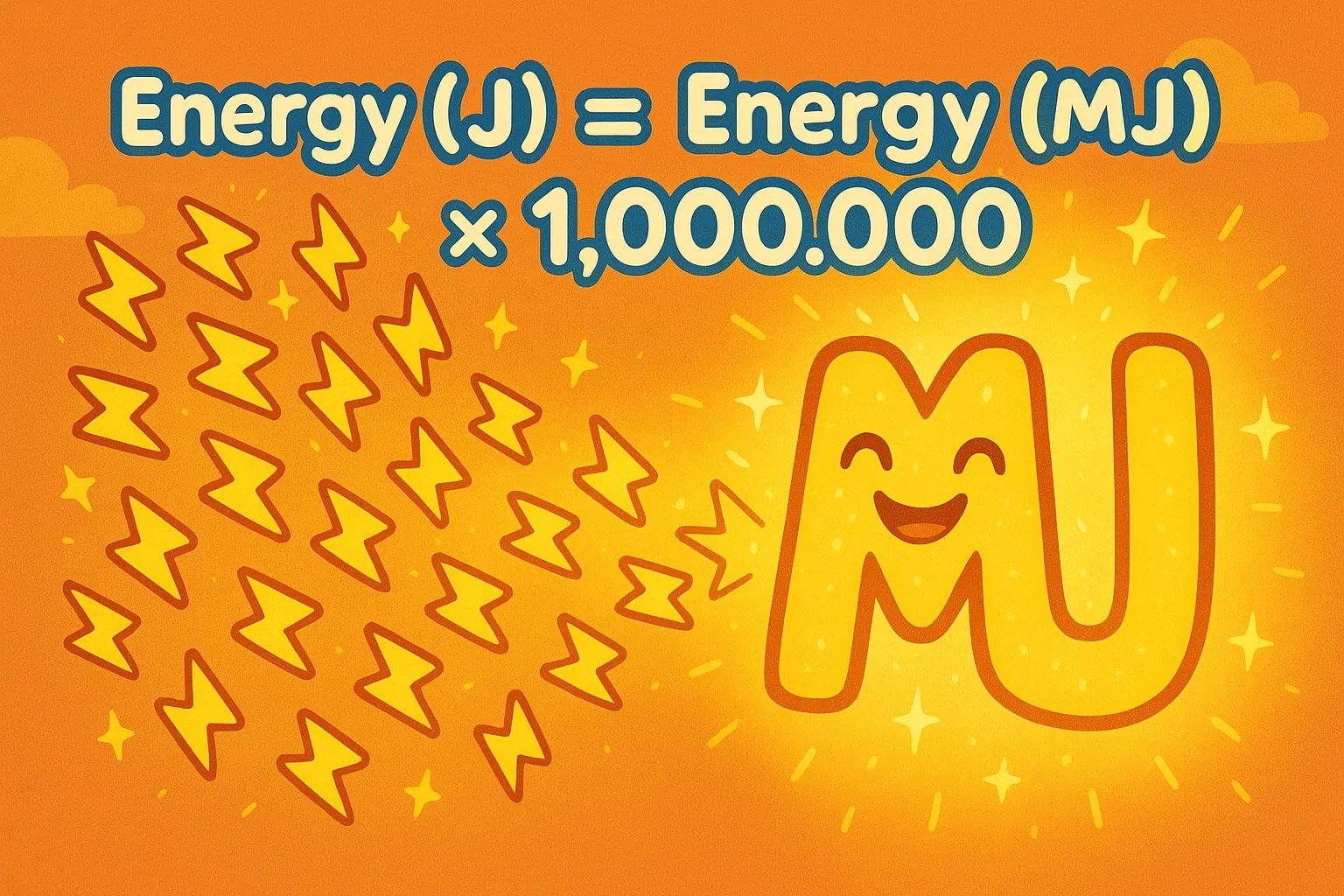joule to megajoule – How to convert J to MJ
The conversion from joule to megajoule might look like a small shift in numbers, but it’s a key step in scaling energy measurements for practical use across science, engineering, renewable power systems, and even space exploration missions, where precise unit changes can influence reporting, analysis, and decision-making.
What is a joule?
A joule (J) is the SI unit of energy, defined as the work done by a force of one newton moving an object one meter in the direction of the force.
Formula:
1 J = 1 N × 1 m
or
E = ½mv²
Joules are used everywhere in science — from calculating the lift needed for an aircraft to the heat output of a small electrical device.
What is a megajoule?
A megajoule (MJ) equals one million joules. This scale is ideal for describing larger quantities of energy, such as fuel content, industrial electricity consumption, or the total output of renewable energy systems.
Formula:
1 MJ = 1 000 000 J

How to convert joule to megajoule
Since both units are in the SI system, conversion is direct:
Energy (MJ) = Energy (J) ÷ 1 000 000
Example:
If you have 9 500 000 J, then
Energy = 9 500 000 ÷ 1 000 000 = 9.5 MJ
To go the other way:
Energy (J) = Energy (MJ) × 1 000 000
You can work it out in seconds with our Energy Converter, or browse the Conversion Tools to find other units you might need.
Do you know?
-
Joule fact: The joule is named after James Prescott Joule, who proved that heat and mechanical work are equivalent forms of energy in the 19th century.
-
Megajoule fact: One megajoule is roughly the energy needed to run a modern laptop for about 4 hours.
-
Joule fact: A single lightning bolt can release over 1 billion joules of energy — equivalent to about 1 MJ.
-
Megajoule fact: In some countries, household electricity bills list monthly usage in megajoules instead of kilowatt-hours.
Powering a Mission: The Spacecraft Energy Log
In deep space missions, every watt counts. A Mars lander, for example, collects solar energy through its panels during daylight hours. Over the course of a Martian day, those panels might generate 18 MJ of electrical energy — a clear, manageable figure for mission summaries and planning.
But when mission scientists look at specific equipment performance, they switch to joules. Turning on a high-resolution camera may consume 25 000 J. Operating a heater to keep instruments warm overnight might use 200 000 J. At this scale, using MJ would result in awkward decimal values, while joules give a more precise and practical reading.
This dual-unit approach helps the mission team make better decisions. When power reserves run low, they can quickly calculate which instruments to prioritize by looking at their consumption in joules. Meanwhile, MJ totals keep leadership and project planners focused on the bigger picture — the daily and weekly energy budget for the entire spacecraft.
The relationship between J and MJ here isn’t just mathematical. It’s a tool for communication — ensuring engineers, scientists, and mission planners all work from the same data, just scaled to their needs.

Energy Units That Fit the Task
The joule to megajoule conversion is a perfect example of how scaling units keeps information clear. Joules provide microscopic precision for detailed engineering work, while megajoules give a cleaner view of large-scale totals in reports, budgets, or public updates.
Whether you’re powering a spacecraft, running industrial equipment, or analyzing renewable energy output, the ability to switch between J and MJ ensures your data is both accurate and easy to interpret. Energy doesn’t change — but the way you express it can make all the difference.

